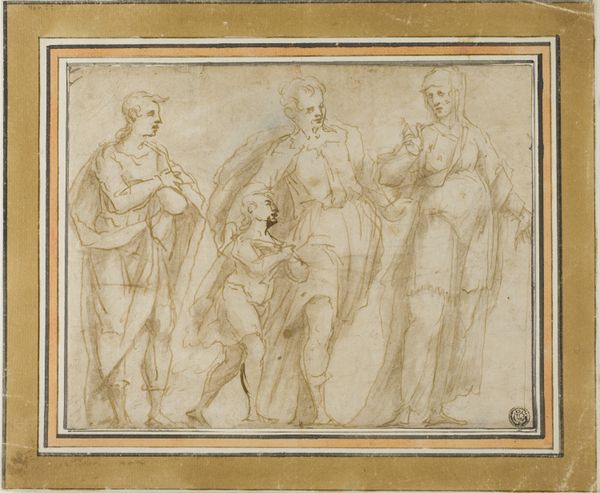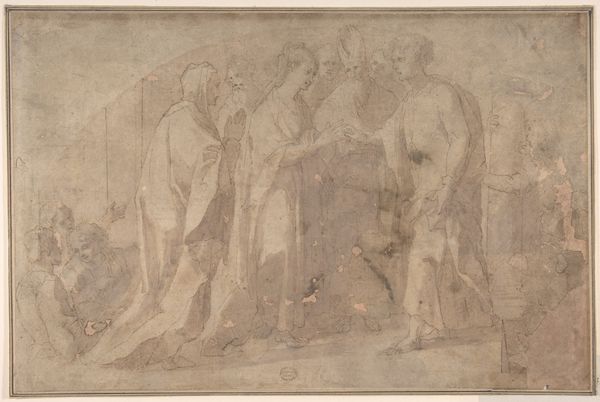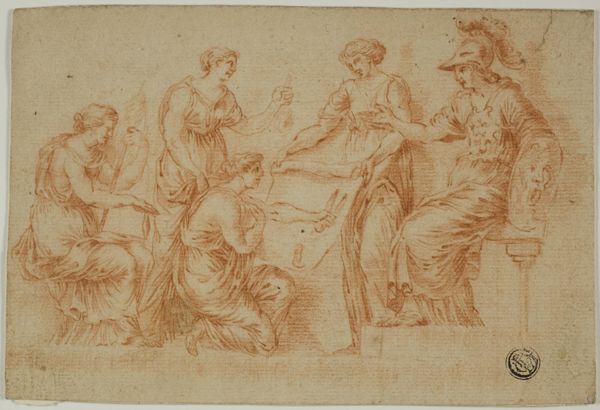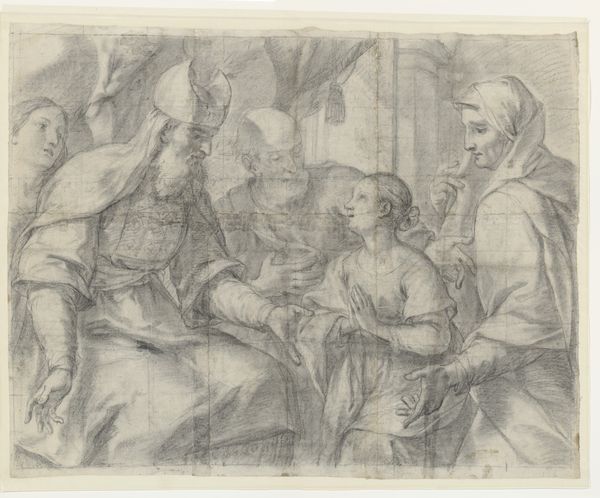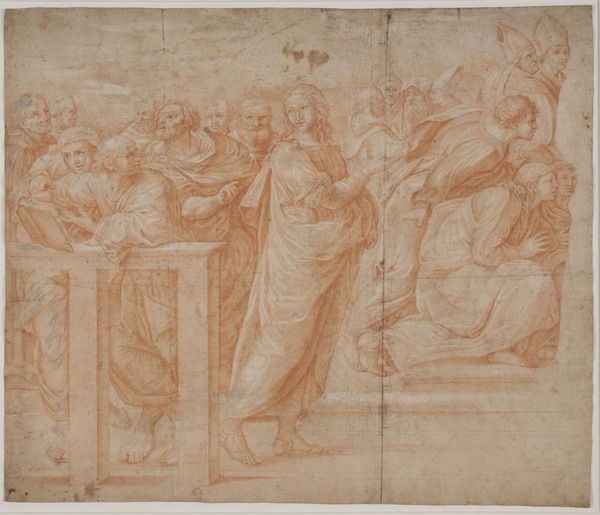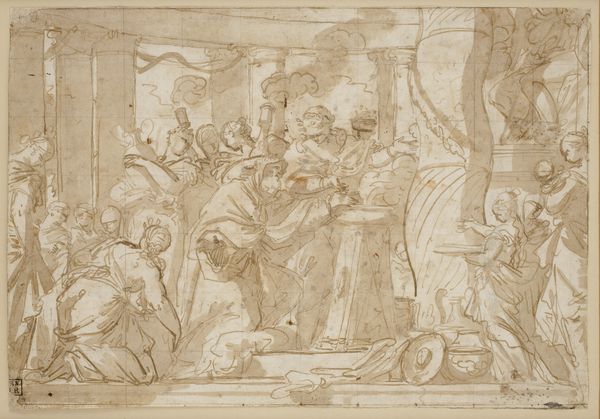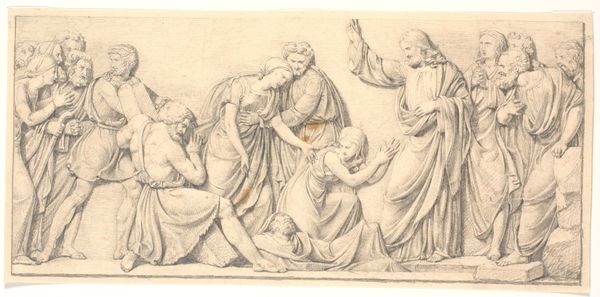
Sts Augustine, Nicholas of Tolentino, Teresa and William 17th century
0:00
0:00
drawing
#
drawing
#
baroque
#
figuration
#
pencil drawing
#
history-painting
Dimensions: 309 mm (height) x 422 mm (width) (bladmaal)
Curator: Here we have "Sts Augustine, Nicholas of Tolentino, Teresa and William" by Luca Giordano, a drawing dating back to the 17th century. It’s a rather compelling historical grouping. Editor: My immediate impression is one of upward movement and intense devotion. All figures seem to be looking towards something above, conveying a sense of transcendence, wouldn't you agree? Curator: Absolutely. Giordano here presents an intersection of spiritual figures spanning various historical periods, united by their religious significance. Augustine, a pivotal philosopher and theologian, stands alongside Nicholas of Tolentino, representing themes of penance and pastoral care. Teresa embodies mystical experience, and William exemplifies religious leadership, doesn't he? This convergence speaks to enduring religious themes of redemption, faith, and guidance. Editor: I'm struck by the skillful use of line. Notice how Giordano captures light and volume with minimal strokes, focusing our attention on the facial expressions and gestures. It exemplifies the principles of disegno so valued during this time. Curator: Precisely. Considering the political landscape of the 17th century and the religious fervor that dominated the social structure, we have to analyze the patronage network. The Catholic Church used such art for didactic and ideological purposes, so what narrative might this image promote in society? Editor: Interesting thought. Looking at the formal arrangement, the figures create a dynamic composition—a Baroque feature to enhance visual drama and emotional impact. The convergence of lines and the tonal variations work harmoniously to focus the viewer's eye, emphasizing the ethereal nature of the divine to which they appeal. Curator: Contextually, this piece can provide insight into the way saints' images could consolidate ecclesiastical authority, using venerated symbols to mobilize communal sentiment within larger political events. What is this image conveying to an emerging Catholic audience in Europe? Editor: So true. Examining the line quality and use of space together enhances the composition, but for me, these elements work independently to evoke a range of aesthetic feelings and religious undertones. Curator: Well, by considering the socio-political influences on devotional images, the drawing gives insights into historical intersectional politics, illustrating art as social document, and providing viewers with complex interplays that affected identity development. Editor: I see your point. Curator: And seeing it this way opens a portal into history to investigate complex political and devotional histories through art, rather than the other way around. Editor: This close inspection has definitely deepened my understanding of not only Giordano's technical skill, but the layers of historical narratives embedded within his art. Curator: Agreed, this artwork truly bridges formal excellence with cultural awareness.
Comments
No comments
Be the first to comment and join the conversation on the ultimate creative platform.

